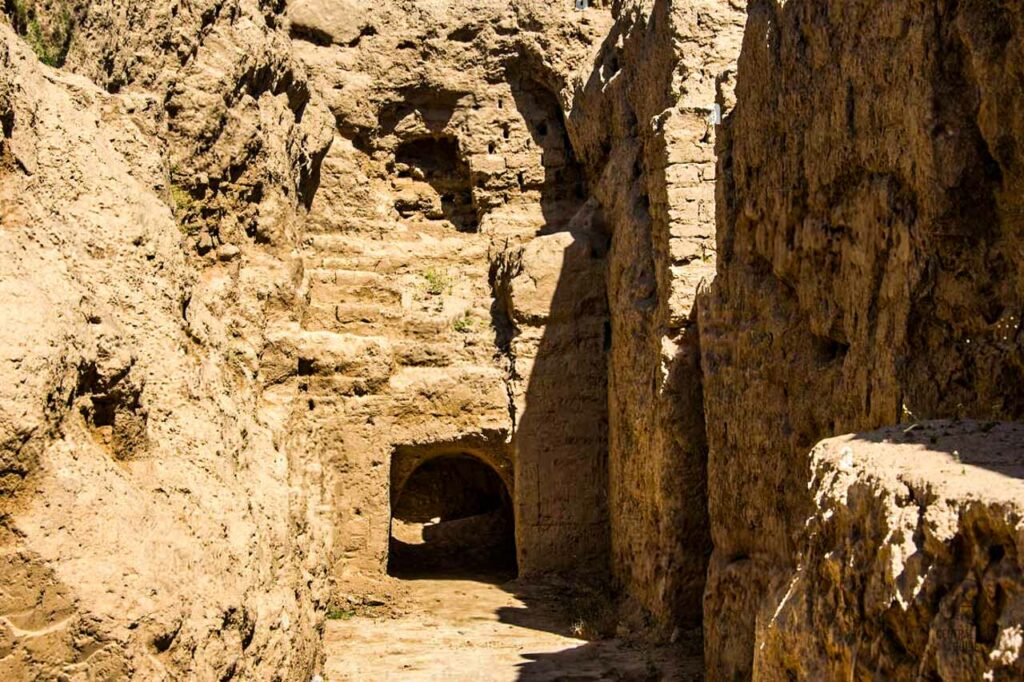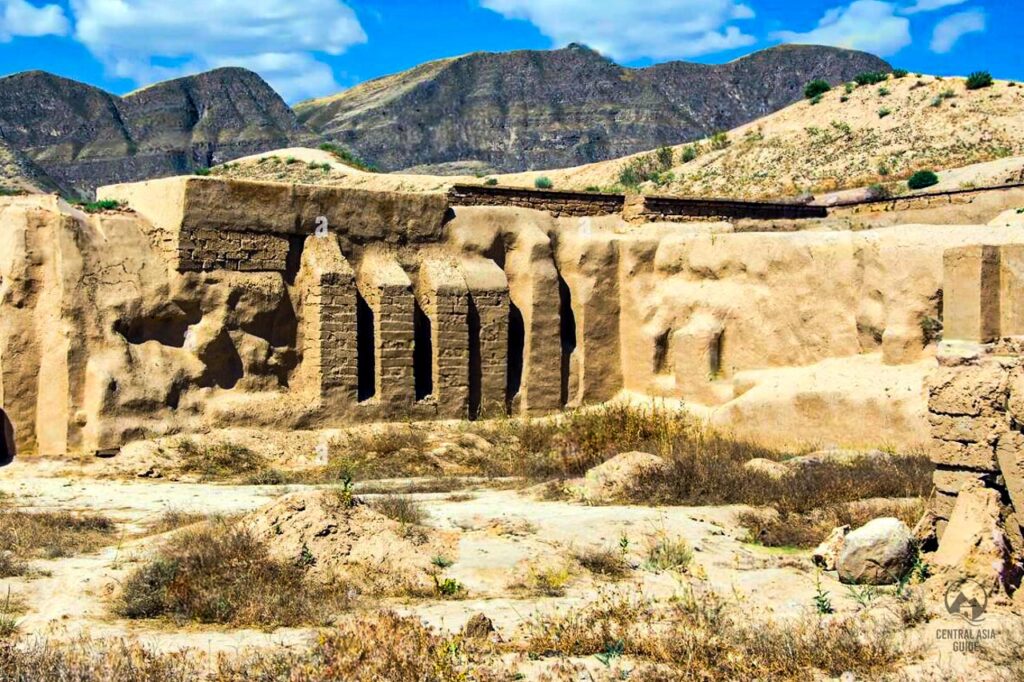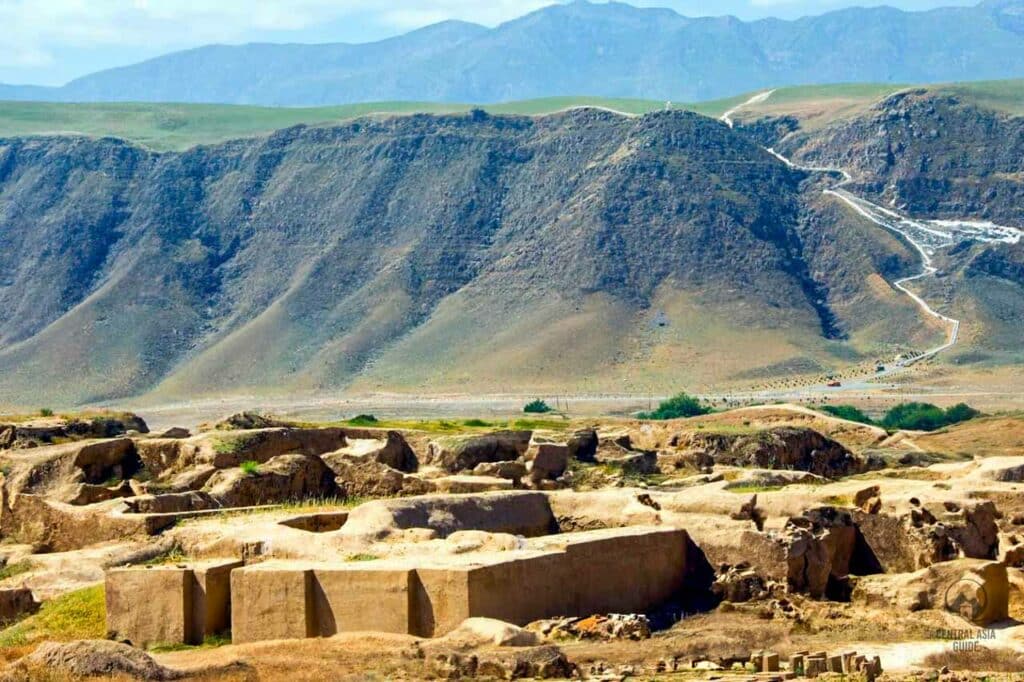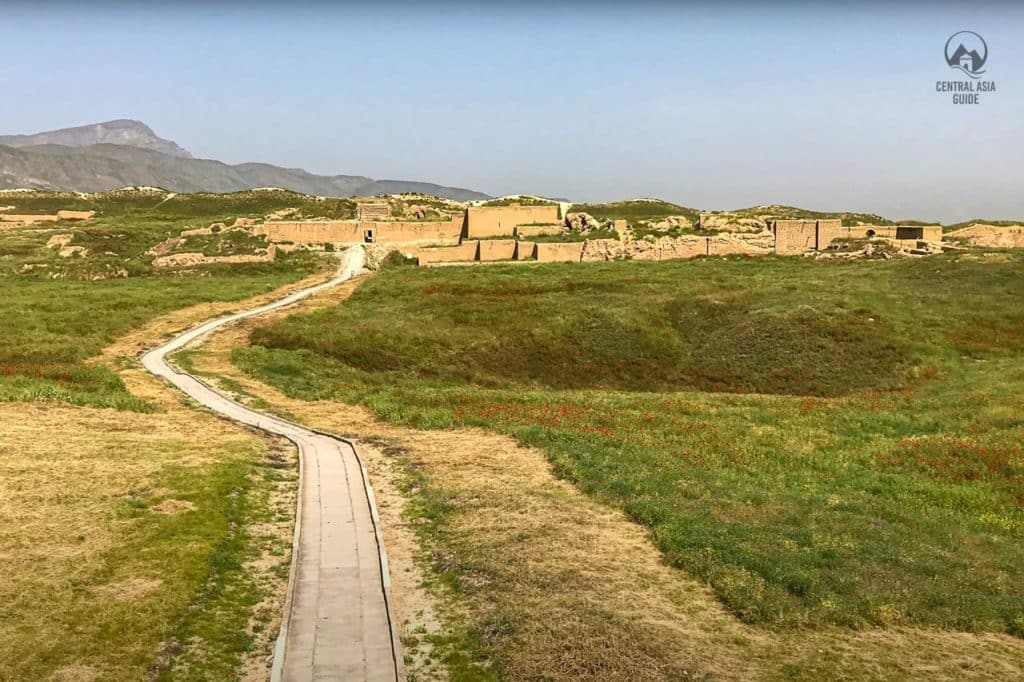Nisa
Nisa - Capital of the Parthian Empire and Crossroads of Ancient Civilizations
Nisa, also known as Parthaunisa, is an ancient city located near Bagir village, just 18 km southwest of Ashgabat, Turkmenistan, and close to the Iranian border. Nisa, the capital of the Parthian Empire, was a dominant force in Central Asia from the mid-3rd century BCE to the early 3rd century CE.
Strategically located, it served as a barrier against Roman expansion while also becoming a key communications and trading hub at the crossroads of vital north-south and east-west routes. The archaeological remains of Nisa showcase the significant cultural exchange between Central Asian and Mediterranean civilizations, reflecting the region’s political, economic, and strategic prominence during antiquity.
Excavations at Nisa have unearthed remarkable structures, including large buildings, mausoleums, and shrines, along with a wealth of artefacts that highlight its cultural and historical significance. Among the treasures found are Hellenistic artworks, ivory rhytons adorned with Iranian themes and classical mythological scenes, and a trove of recorded documents that offer insights into the Parthian era. The site was renamed Mithradatkirt, or “Fortress of Mithradates,” by Mithridates I of Parthia (r. circa 171–138 BC). Unfortunately, much of Nisa was devastated by a powerful earthquake in the first century BC, but its ruins remain a testament to the Parthian Empire’s rich legacy.
In 2007, the fortress ruins of Nisa were inscribed as a UNESCO World Heritage Site, recognizing their outstanding cultural and historical value. Visitors to Nisa can explore this ancient archaeological treasure, a must-see for history enthusiasts and those seeking to experience Turkmenistan’s fascinating heritage.


Old Nisa
Old Nisa, also known as Mithradatkirt, was the royal and ceremonial centre of the Parthian Empire. Believed to have been founded by Arsaces I (250–211 BCE) and later renamed by Mithridates I (171–138 BCE), it served as a royal fortress and necropolis for Parthian kings.
The site contained palaces, temples, treasury buildings, and administrative offices, making it a hub for cultural and political activities. Archaeological excavations at Old Nisa have revealed monumental structures, including mausoleums and storage rooms, as well as Hellenistic-inspired ivory rhytons and artefacts.
Perched on a fortified natural hill about 18 km southwest of modern Ashgabat near Bagyr village, Old Nisa exemplifies a blend of Hellenistic and Iranian art and architecture, symbolizing the cosmopolitan nature of the Parthian Empire.
New Nisa
New Nisa, built later than Old Nisa, functioned as a practical administrative and commercial hub for the Parthian Empire. It served as a bustling urban centre, supporting governance and trade activities.
Unlike the royal and ceremonial focus of Old Nisa, New Nisa catered to the general population and everyday activities, making it a vital part of the empire’s economic infrastructure. The archaeological remains of New Nisa include smaller public buildings, homes, and marketplaces, reflecting the urban life of the Parthian period. Its location on the plains made it more accessible and functional compared to the secluded and fortified Old Nisa.


Importance of Nisa
Nisa symbolized the strength of the Parthian Empire, a rival to Rome that successfully halted Roman attempts to expand eastward. Furthermore, as a trading and communication center, Nisa thrived at the intersection of major commercial and strategic routes, facilitating an exchange of ideas, goods, and cultural influences between Asia and the Mediterranean.
Surviving remains at Nisa, including its two prominent tells, highlight its political and economic power. These remnants reveal the interaction of Central Asian and Mediterranean cultures through Parthian architecture and urban planning.
Wine Store
The wine store lies on the east of the treasury building. It contains large clay vessels which possibly held the wine. This building proved particularly valuable to archaeologists because each of the vessels was accompanied by little clay shards, ostraca, on which mundane information was written about the origin and date of purchase of the wine. Thanks to this data, researchers studied more about the economy and human geography of the region in Parthian times, as well as established the Parthian name of the fortress itself.
Bagyr Village
If you have time, head to Bagyr village to see some more monument worth a glance. To the west side of the access road leading to the Old Nisa site, you will see crumbling mud-brick walls. These rectangular 19th century ruins are what is left of the Kulmergeen Kala. Turkmen families would have lived in yurts and mud buildings within the courtyard protected by them. At the far western side of the village is a mausoleum known as Shaikhalov which in fact is a restored octagonal building with a domed roof. The tomb is said to be that of the 10th century Sheikh Abu Ali Dakkak. A brick gate stands next to the mausoleum and pilgrims say a prayer as they walk through it.
Preservation and visiting Nisa today
At the foot of the Kopet-Dag Mountains, the ruins of Nisa have maintained their authenticity despite natural erosion. Neither of the two testifies to the original magnificence of the Parthian capital. However, both have kept their archaeological integrity. Being one of 1,300 historical and cultural monuments of Turkmenistan, the site forms part of one of eight State Historical and Cultural Parks (SHCPs) in the country.
Several plans regarding the preservation and maintenance are being processed concerning the protection of Nisa such as the creation of the buffer zone and providing the surrounding area development plan was developed, for five year; 2006 -2010 and harmonising existing strategy for the management in light of balance excavation with preservation activities.
For visitors, Nisa offers all the greatness of the Parthian Empire, whose influence was so decisive for this region. Its strategic position, rich archaeological heritage, and very interesting history make it a necessary place to visit-a UNESCO World Heritage Site of Turkmenistan.
Sights near Nisa
Page updated 18.12.2024